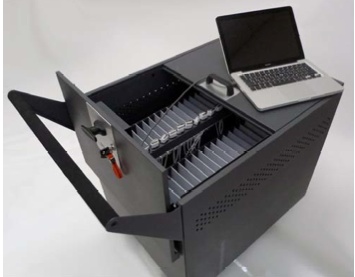With the advent of new touch sensor structures driven by consumer demand for lighter and thinner devices, NPD DisplaySearch (www.displaysearchblog.com/) finds that in-cell touch technology and DITO (dual ITO) film are the wave of the future.
The research group reports that more than 7.5% of the mobile phone marketplacewill be using in-cell touch in 2012, a number that is estimated to grow to 16.7% by 2018. In addition, tablet computers, which primarily utilize projected capacitive touch technology, will see a5% shipment share of DITO film structure technology in 2012.
Apple’s, newest iPad and iPhone models incorporate these new touch sensor structures. The iPhone 5 uses in-cell touch technology, which is a major change to the touch structure since the first iPhone model in 2007. Meanwhile, the iPad mini features a DITOfilm structure.
“These two new projected capacitive touch sensor structures enabled Apple to reduce the thickness and weight of the iPhone 5 and iPad mini,” says Calvin Hsieh, research director, NPD DisplaySearch. “These factors contribute to the consumer demand for these products, but manufacturing the new sensors has proven problematic.”
Apple sources the four-inch 1136 × 640 (326 ppi) in-cell touch LCD from LG Display, Japan Display and Sharp under a license to use Apple’s in-cell touch patents. Under the terms of the agreement, these panel makers are not allowed to sell LCD panels of any size using Apple’s in-cell touch patents to other companies.
Limited production along with the challenges in producing the new sensors with strict performance requirements have resulted in poor yield rates (70-80% or less) in the LCD panel manufacturing. These challenges have also led to a higher price for in-cell touch.
The iPad mini represents the first tablet PC display to incorporate a DITO film touch sensor, which is lighter and thinner than DITO glass (0.125 compared to 0.4 mm). However, there are challenges with production of the sensor on film and lamination since it is easily broken when stretched.
Also, alignment of film sensors is more difficult than with rigid glass, especially for larger sizes. These challenges have resulted in low production yield rates, which have been a contributor to the higher entry price of $329 for the iPad mini. Other tablet PCs which are less expensive, use glass sensors or a one-glass solution with optical bonding.
“In-cell touch and DITO film offer some clear advantages, but at the expense of lower yield rates and higher costs—at least in the early stages of production,” says Hsieh. “Apple has concluded that the benefits of thinner, lighter devices will be highly valued by consumers.”
DisplaySearch surveyed over 200 suppliers of touch screen modules, controller ICs, ITO film, and other components to produce the 2012 Touch Panel Market Analysis. These firms are profiled in the report along with 2011 historical shipments and revenues for more than 110 touch screen suppliers.


